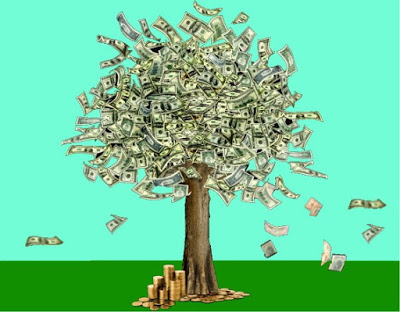Was the Fed just nationalized?
 |
| Ellen Hodgson Brown 06/04/2020 |
Did Congress just nationalize the Fed? No. But the door to that result has been cracked open.
Mainstream politicians have long insisted that Medicare for all, a universal basic income, student debt relief and a slew of other much-needed public programs are off the table because the federal government cannot afford them. But that was before Wall Street and the stock market were driven onto life-support by a virus. Congress has now suddenly discovered the magic money tree. It took only a few days for Congress to unanimously pass the Coronavirus Aid, Relief, and Economic Security (CARES) Act, which will be doling out $2.2 trillion in crisis relief, most of it going to Corporate America with few strings attached. Beyond that, the Federal Reserve is making over $4 trillion available to banks, hedge funds and other financial entities of all stripes; it has dropped the fed funds rate (the rate at which banks borrow from each other) effectively to zero; and it has made $1.5 trillion available to the repo market.
It is also the Federal Reserve that will be picking up the tab for this bonanza, at least to start. The US central bank has opened the sluice gates to unlimited quantitative easing, buying Treasury securities and mortgage-backed securities “in the amounts needed to support smooth market functions.” Last month, the Fed bought $650 billion worth of federal securities. At that rate, notes Wall Street on Parade, it will own the entire Treasury market in about 22 months. As Minneapolis Fed President Neel Kashkari acknowledged on 60 Minutes, “There is an infinite amount of cash at the Federal Reserve.”
In theory, quantitative easing is just a temporary measure, reversible by selling bonds back into the market when the economy gets back on its feet. But in practice, we have seen that QE is a one-way street. When central banks have tried to reverse it with “quantitative tightening,” economies have shrunk and stock markets have plunged. So the Fed is likely to just keep rolling over the bonds, which is what normally happens anyway with the federal debt. The debt is never actually paid off but is just rolled over from year to year. Only the interest must be paid, to the tune of $575 billion in 2019. The benefit of having the Fed rather than private bondholders hold the bonds is that the Fed rebates its profits to the Treasury after deducting its costs, making the loans virtually interest-free. Interest-free loans rolled over indefinitely are in effect free money. The Fed is “monetizing” the debt.


